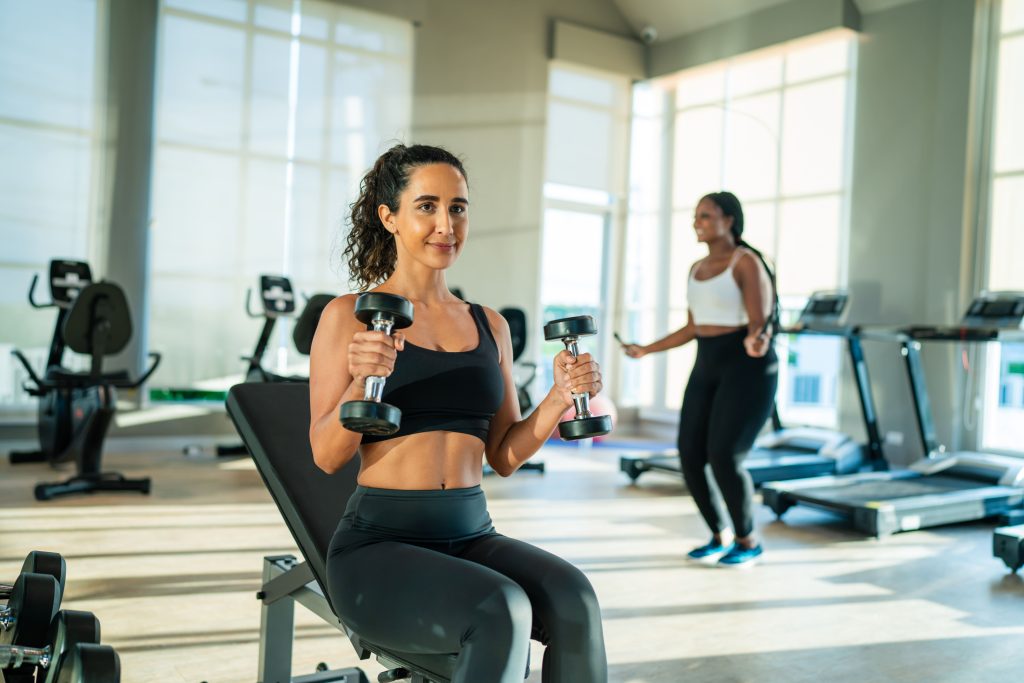Opening your first gym: Find the Right Gym Model for Your Vision
Deciding to open your first gym is very exciting… you start visualizing the facility, people entering ready to train hard, your staff being happy providing amazing services to your members, everything just seems so perfect, almost like a dream. But before you jump in, a lot of questions start popping up in your mind: Where will my gym be located? What size and layout will my gym need? What systems will I use to manage memberships and operations? and the most important question: What kind of gym do i want to open?
And the thing is: Not all gyms are created equal. There’s no one-size-fits-all model, and that’s a good thing! The best gym for you to start is one that aligns with your vision, values, and the community you want to serve. So ,in this blog, we’ll break down for you different gym models, the pros and cons of each, and how to choose the one that’s right for you.

1. The Traditional Gym
These are the large, all-encompassing facilities that offer something for everyone. Traditional gyms like Planet Fitness, Gold’s Gym, or Anytime Fitness are equipped with treadmills, free weights, machines, group fitness studios, and locker rooms. They rely on membership volume to sustain operations.
❓ Who Is It For?
This model is ideal for someone who enjoys managing large-scale operations and reaching a broad audience. If you’re good with numbers, logistics, and marketing, a traditional gym might be your best fit.
✅Why it works?
Traditional gyms succeed because they offer variety and convenience. For many people, these gyms are a one-stop shop for all their fitness needs. Membership fees provide consistent income, and additional revenue streams like personal training or merchandise can boost profitability.
Let’s take the example of Andy Gundlach — Owner of Anytime Fitness. We had the pleasure to have him as a guest in sweat success podcast, where he shared with us his story about how he started his fitness and entrepreneurial journey with some savings from 13 years of work in Pizza Hut. He opened his first gym location in 2006, and since that point on, he didn’t stop growing! Over the next years, he scaled his business to 30 Anytime Fitness locations and diversified into commercial real estate and other ventures.
His secret for growth was simple, he prioritized taking action over over-analysis, which allowed him to seize opportunities quickly, as well as maintaining exceptional service quality and clean, well-equipped facilities. Another important and super relevant strategy he mentioned was: having a strong team and culture, always empowering each of them for leadership.
“You’ve got to give your team the freedom to take ownership. No one’s ever going to care about your business as much as you do, but if you create the right environment and culture, they’ll get pretty darn close. As you grow, it’s important to really trust your team, getting multiple perspectives, and making better decisions together. That’s what ensures your business stays strong and keeps growing.” – Andy Gundlach
If you’d like to watch the full episode to gain more insights about his journey and biggest learnings, click here.
⚠️Challenges to Consider with this model
- Competition: Large gym franchises dominate this space. You’ll need a unique selling point (USP) to stand out, whether it’s pricing, amenities, or atmosphere.
- High Costs: Equipment, staffing, and leasing large spaces can be expensive. You’ll also need significant upfront capital for marketing to attract members.
- Member Churn: These gyms often struggle with retention because they attract a wide range of people, some of whom may lose interest quickly.
💥Pro Tip
If you go this route, focus on creating a strong sense of community within your gym. Even a large facility can feel personal if members feel valued and connected.

2. Boutique Fitness Studio
Boutique studios are specialized gyms that focus on a specific type of workout or experience, such as yoga, spinning, barre, or functional training. Unlike traditional gyms, these spaces are smaller, more intimate, and heavily community-driven.
❓ Who is it for?
This is perfect for someone passionate about a specific fitness niche and who wants to cultivate a tight-knit, loyal community.
✅Why it works?
Boutique studios thrive because they deliver a premium, personalized experience. Clients often pay higher fees for the specialized attention and a sense of mutual trust and support in these gyms.
A great example for this, is one of our Buzops users Peter Kraus, who has a very unique approach in his gyms Peter Kraus Fitness, with a model that connects fitness and wellness in another level. In his clubs he offers contrast therapy, sauna and now he will be incorporating dexa units to better track his client’s progress.
His model is working and succeeding because of one single thing: He is focusing on recreating a different experience in all his gyms… they all feel different but with the same customer luxury-centered approach. He wants his members to feel like they get a VIP treatment at his gyms regardless of their financtial positions. Now he is also putting efforts on bringing to his clients a mind and body connection experience in his facilities.
If you feel like this approach resonate with you, then consider this example and use it for inspiration to craft your own unique selling point for your members.
⚠️Challenges to Consider with this model
- Limited Market: Specialization can make potential members who aren’t interested in your niche walk away.
- High Member Retention Needs: To succeed, you’ll need to retain a significant percentage of your members since your audience is smaller.
- Instructor Dependency: The quality of your trainers or instructors will directly impact your reputation and success.
💥Pro Tip
Take Peter Kraus example to build your brand around an experience, not just a workout. Think about what makes your studio unique: is it the atmosphere, the music, the customer service, or the community vibe?

3. Personal Training Studio
These studios focus on delivering one-on-one training or small group sessions. They cater to individuals who want personalized attention to meet their fitness goals.
❓ Who is it for?
This model is ideal for trainers or fitness enthusiasts who love working closely with clients to achieve specific results.
✅ Why it works?
With fewer members, you can provide a highly personalized experience, which allows you to charge premium prices. Overhead costs are often lower since you don’t need as much equipment or space.
For reference, take the scenario of Alloy Fitness, the only fitness franchise focused exclusively on small group personal training. Owned by Rick Mayo, whom we also had the pleasure to speak with in sweat success, where he told us that one of the things that lead him to have rapid growth and success in his business, was exactly the emphasis on a single service offering (small group personal training) to reduce complexity in operations.
The key was in the design for small footprints, which generates a higher client retention and a manageable numer of clients (around 130-150 in total). This model is successfull because it maintains low churn rates (-4% per month) in franchises, ensuring high client retention and minimal marketing costs… helping Alloy fitness to grow and scale fast.
If you’d like to learn more about Rick Mayo’s model, watch the full episode here.
⚠️Challenges to Consider with this model
- Labor Intensive: Since personal training is highly involved, it can be demanding for the owner if they’re also a trainer.
- Scalability: Your revenue may be limited by the number of hours you (or your trainers) can work.
- Consistency: You may face fluctuations in income if clients cancel or stop training sessions.
💥Pro Tip
Focus on upselling packages or memberships rather than single sessions. Offer value-added services like nutrition coaching or fitness assessments to deepen your revenue streams.

4. Specialty or Niche Gyms
These gyms cater to specific groups or interests, like women-only gyms, senior fitness centers, or eco-friendly gyms.
❓ Who Is It for?
If you’re passionate about serving a unique audience or solving a specific problem, this could be your calling.
✅ Why it works?
Niche gyms often have less direct competition and can charge premium prices for their specialized services. They attract a highly loyal customer base because they meet unique needs.
An excellence illustration of this is Mark Fisher Fitness – A boutique fitness center that sets itself apart by embracing unique, niche approach communities like the theater crowd and other “ridiculous humans” who might not feel at home in a traditional gym setting. The gym is famous for its unconventional branding, with its colorful, playful, and aesthetic environment. This makes it approachable and relatable for people who might otherwise avoid “normal” gyms due to their unique personality.
Mark Fisher success overtime is a perfect proof that gyms with a specific niche can thrive against more generalized fitness centers. His results highlight how authenticity, a strong community, and creative business strategies can achieve remarkable success in the competitive fitness industry.
By the way, we had an amazing and deep conversation with Mark Fisher on the Sweat Success podcast, so just in case you’d like to watch it and get inspired by his unique vision and passion for his fitness community, click here.
⚠️Challenges to Consider with this model
- Smaller Audience: Your potential member pool will be limited, which means marketing needs to be highly targeted.
- Market Education: You may need to spend more time educating your audience about the value of your niche service.
💥Pro Tip
Position your gym as an expert in its niche. Use content marketing and events to establish authority and attract the right clients.

5.Hybrid Gym
A hybrid gym combines elements of multiple models. For example, it might offer traditional gym memberships alongside boutique-style classes or personal training.
❓ Who Is It for?
This model works well for someone who wants to appeal to a broad audience while still offering premium services.
✅ Why it works?
Hybrid gyms diversify their income streams, which reduces risk. They can attract different demographics by offering varied services under one roof.
⚠️Challenges to Consider with this model
- Complex Operations: Managing multiple revenue streams can complicate your operations.
- High Initial Costs: You’ll need to invest in equipment and space for multiple offerings.
💥Pro Tip
Make sure your branding and marketing clearly communicate the benefits of your hybrid approach. Avoid confusion by ensuring every service aligns with your overall mission.
Final Thoughts
Choosing the right gym model is 100% about building something that reflects your passion and serves the community you want to serve. Take the time to evaluate your skills, resources, and goals to really see what gym model your heart really wants. The gym industry is incredibly rewarding, but your success will depend on aligning your vision, passion and burning desire with the right model.
With the right planning and focus, you can create a gym that thrives not just as a business, but as a space that changes lives! including your own.
Make sure to follow us in social media to receive inmense value for your gym! And if you want a complete and advance management software to manage your operations, then consider requesting a free demonstration to see how we can help you to grow and succeed in your business operations.